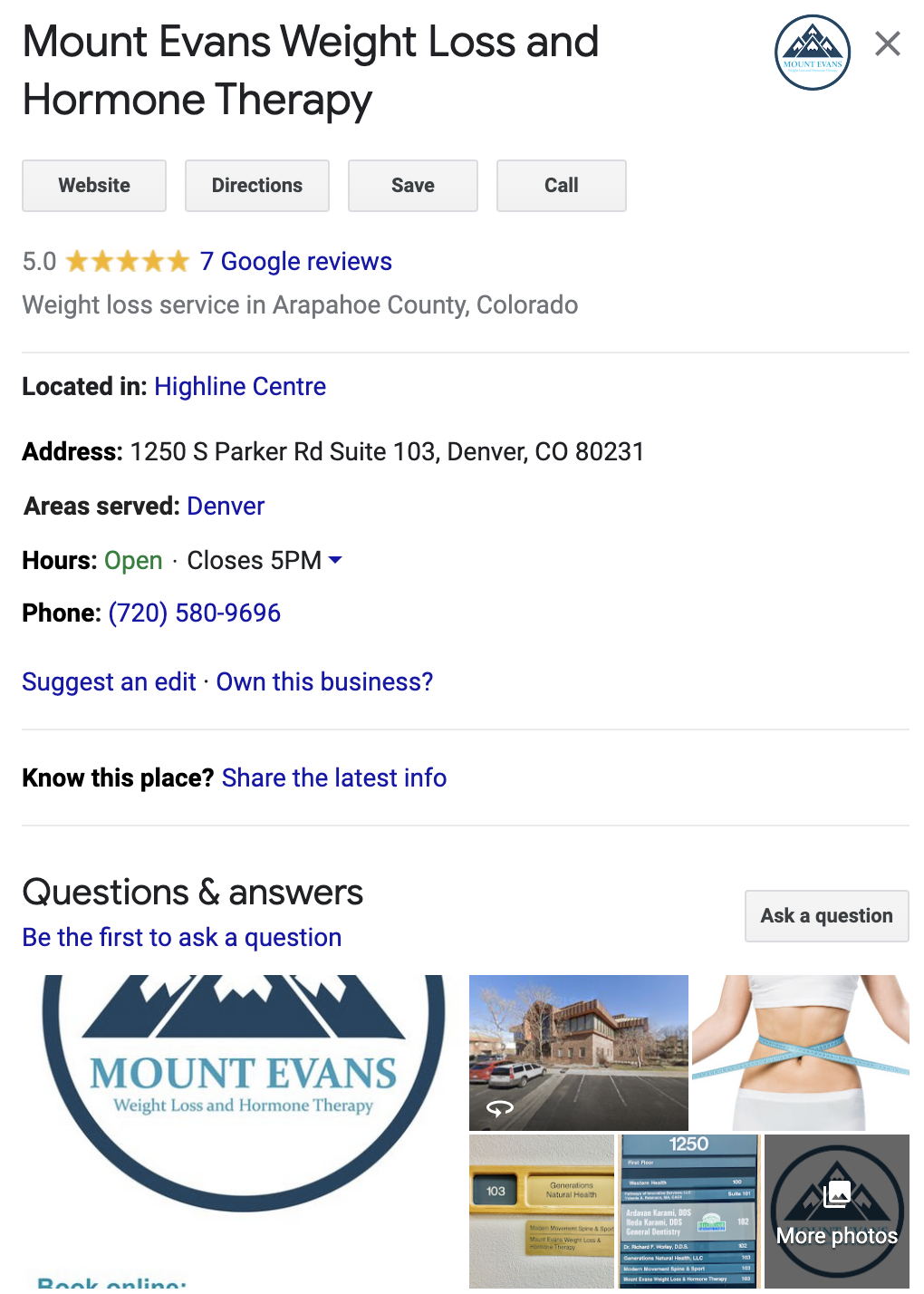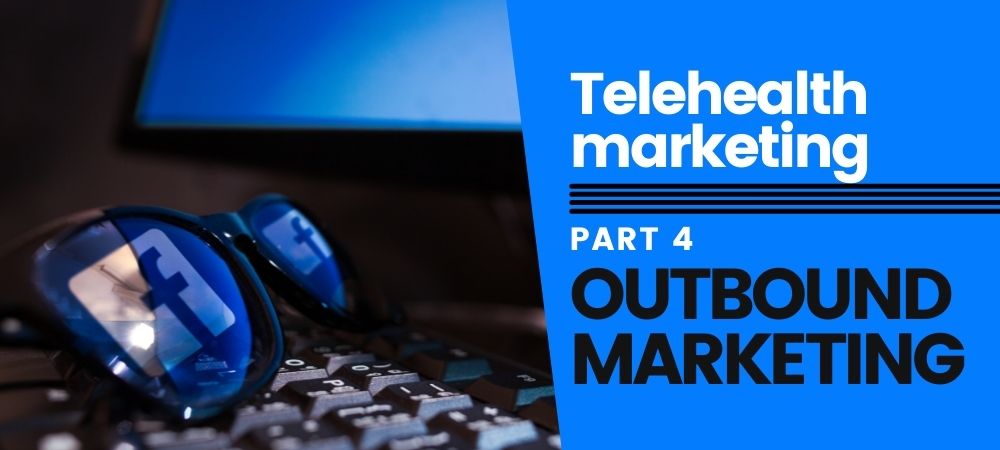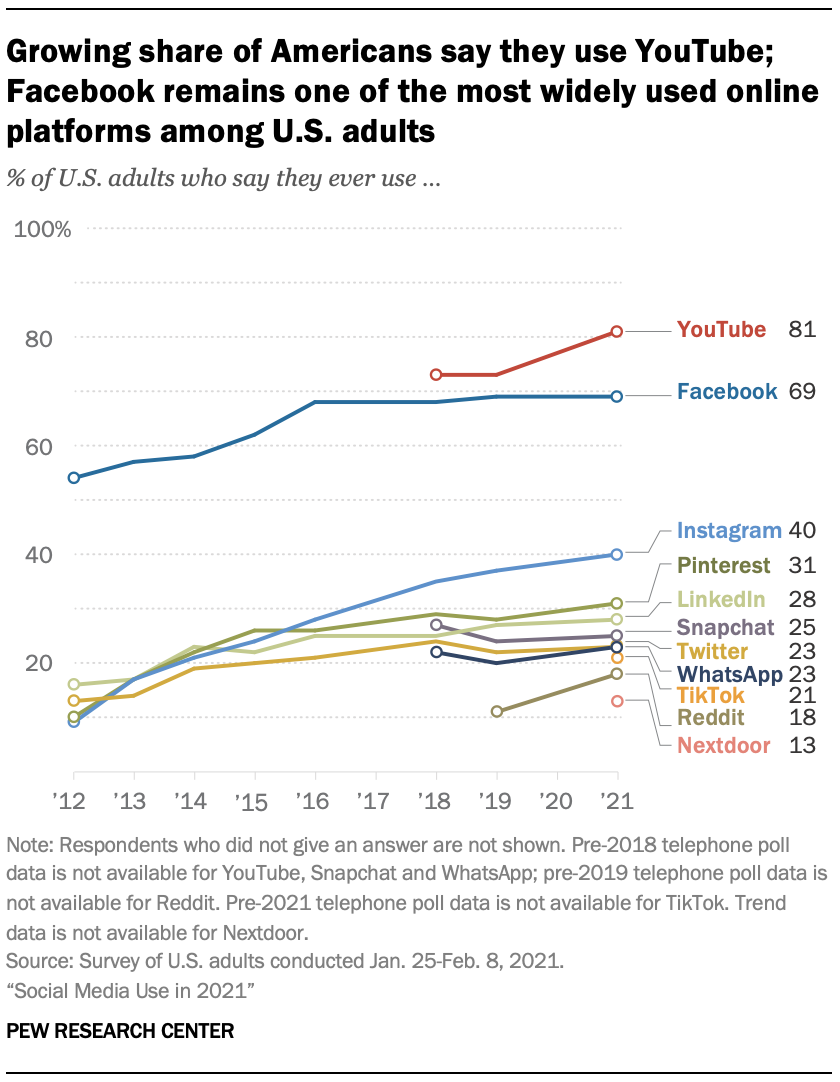Marketers seldom rely on inbound strategy alone.
And though telehealth occupies a unique market space—usually calling for a softer, more measured approach to consumer outreach—sometimes inbound marketing simply can’t cover all the necessary bases.
In other words: You may need some added insurance.
Enter the outbound side of the marketing equation: the point where your team sets off in pursuit of new adopters, rather than relying solely on content skills or organic SEO to point users in your direction.
The goal is to galvanize instead of magnetize.
If this sounds like traditional advertising to you, you’re not wrong. Outbound strategy is far less focused than inbound strategy, designed to widen the playing field rather than narrow down a segmented audience. It can feel less like a legitimate strategy and more like crossing your fingers and hoping for the best.
But there’s a method to its madness.
Your outbound efforts can be as tactical and deliberate as any other full-blooded marketing strategy, no matter how big a net you’re hoping to cast. As with inbound strategies, you can plan, budget, measure data, and fine-tune as you go. And you can still prioritize more desirable targets over the general public.
For the purposes of telehealth, it’s helpful to think of your outbound strategy as being complementary to your inbound channels, filling in gaps by attracting audiences who:
A) might not know telemedicine exists,
B) might not know your telehealth practice holds the potential solution to their consumer “problem,” or
C) may not even recognize they have a problem at all.
Let’s look at some crucial tips for implementing outbound practices to round out your telehealth marketing plan and help expand your reach as far as you might need.
Build a workable budget
Unlike inbound strategy, outbound carries costs that are rarely “one and done.”
An inbound asset (think: a blog post or an eBook) will typically involve a single flat-rate payment. And that’s it. The asset will continue to bring in organic traffic without any added fees: a gift that keeps on giving.
But outbound strategies—particularly in the digital sphere—can be a lot more complicated.
Most digital advertisement works on a pay-per-click (PPC) scale, which requires you to pony up each time your ad scores a click from a potential client.
Even more complicated? Digital ad platforms like Google will perform in-house “auctions” before they surface ad content, meaning the amount of money you pay per customer click will fluctuate depending on your predetermined maximum “bid” and the bids of your competitors. (The higher your bid, the greater your level of potential exposure.)
Then, of course, there are other ongoing costs, including customer research, analysis reporting, creative input, and performance monitoring.
With so many disparate factors in play, it’s useful to nail down an advertising budget to help keep your outbound strategy in check. This way you’ll have a better idea of exactly how much to bid on your digital ads and when to pull the plug or reassess your campaign. Plus, you’ll gain added insight into how much you can afford to allocate elsewhere.
Unsure of what your budget should look like? Check out these recent statistics:
- On average, small- to medium-sized businesses set aside $9,000 to $10,000 a month for PPC ads on Google, with an expected return of $8 for every $1 spent.
- Larger enterprises in the US and UK tend to devote 10% of their revenue to marketing, with paid media accounting for 26% of marketing spend.
- Paid advertising slowed down in 2020, with Google Ads taking a definitive hit. However, this was due (at least in part) to the pandemic, and may not be reflective of overall marketing efforts in telehealth.
- Some healthcare marketing professionals suggest it takes around $100 per day to remain competitive in telehealth using Google Ads.
Get on the list
Once your budget is finalized, your first big step should be to introduce yourself to potential audiences by listing your business in the proper directories.
The digital directory is the phone book of the modern age: a compendium of business names and information made searchable through the magic of the internet.
When spreading the word about your telehealth services, your first port of call should probably be Google My Business, which offers free business profiles (managed and curated by the businesses themselves) that can be served up to web surfers located in specific areas.

A prospect in your neighborhood who conducts a Google search for “telemedicine clinics near me,” for example, would theoretically find your clinic’s name, hours, email address, etc., depending on the info you’ve provided, as well as other readily available data supplied by Google users (such as reviews or photos).
So long as your Google My Business profile remains up to date, you can rest assured your organization will have at least some foundational representation online. That is: You won’t be completely invisible.
However, it’s worth noting your listing can suffer a setback if your telehealth clinic is just one of many options in a large city or a heavily populated state.
You can sidestep this problem by securing a listing in a smaller database, such as a registry compiled within your specialist medical field or an index of community practitioners hosted by a trusted source (temples, pharmacies, school boards, etc.).
You can sidestep this issue even further by launching a targeted strategy for digital advertising.
Attract more eyes with PPC
PPC is an unavoidable reality for today’s business owners. If you want to make it to the head of the pack, you’ll need a solid PPC strategy.
This is mostly because:
1. It helps catapult you to the top of search engine results for your preferred keywords.
2. Everyone else is doing it.
On any given day, PPC ads are quick to take effect, easily monitored and modified, and ideal for customized targeting. More recently, they’ve seen a spike in efficacy thanks to a reduction in both cost and competition (likely due to COVID roadblocks).
If you want to make it to the head of the pack, you’ll need a solid PPC strategy.
Benefits of PPC
Equally enticing advantages to PPC include:
Refined geo-targeting: Depending on the platform, PPC can be aimed at geographic targets as wide as an entire country or as narrow as a small radius inside a single municipality. This drastically improves your ability to seek out your most desired targets.
Ad extensions: Though PPC ads are confined to a maximum word count, ad extensions exist that enable you to tack on information regarding your practice phone number, address, and website, among other critical data.
Viable platforms
When it comes to PPC platforms, there are a ton of heavy hitters at your disposal. Perhaps the biggest players are names you already know well: Google, Facebook, and YouTube.
And as with all solutions, there are benefits and precautions to consider with all three.
Here are some thoughts to keep in mind for each candidate:
There’s no denying this search engine juggernaut. Ads on Google’s PPC advertising platform are all but guaranteed to meet with some form of traffic (if bidding allows).
Remember, however:
- It’s useful to build your Google ads around keywords that speak to an optimal combination of your clinic’s name, location, and available services. Some careful research on trending searches can help you pare down your selections.
- If your practice is one of many in your specified area, it’s a good idea to focus on keywords that reflect the specialized care you provide, rather than the communities you serve (for example: “telehealth in Atlanta” might be an accurate way to describe your clinic, but it’s also a phrase that will yield a lot of competitive noise).
- You can likewise compile a list of negative keywords to steer irrelevant searches away from your ads (helpful when certain searchable topics are “adjacent” to your chosen keywords but not really applicable to your practice).
Here’s what you should know about the famed social network:
- Usage of Facebook is holding fairly steady at around 69% of U.S. adults. This gives you access to a sizeable portion of the population.
- Facebook ads—which can be aimed at highly customized audience profiles—have an excellent healthcare track record, boasting a conversion rate of about three times that of Google Ads.
- Still, Facebook ads are pay-per-click, while Facebook posts are free. Take some time to determine if one or the other (or both) is more likely to reach your chosen audience.
YouTube
This video hub outperforms pretty much all other social feeds. When investigating YouTube, bear in mind:
- YouTube is by far the most trafficked among social media companies and can generate a staggering 32% higher conversion rate than most network competitors.
- As with Google Ads, YouTube ads are surfaced based on consumer searches, which allows you to home in on various segments of the telehealth market.
- You also have the option of running a YouTube channel, in which case your content can be uncovered by anyone who searches for your service or practice by name. In addition, you’ll be able to monetize the videos you post, should they meet certain requirements.
Content building and performance measurement
Decided on a platform and got your ads up and running? Great.
But you’re not done.
All PPC ads should correspond to appropriate content and should link to materials that illuminate and expand on the “teasers” they provide. Make sure all ads transport prospects to parallel landing pages or websites that can answer all their questions while encouraging them to take an obvious next step (such as signing up for a newsletter or scheduling an initial consultation).
For more on creating an impactful telehealth website, see our second installment in this series here.
Beyond ensuring all ads lead to genuine, applicable content, there’s also performance measurement to take into account. Most marketers choose to monitor a variety of benchmarks, but two of the most important signifiers in telehealth are clickthrough rate (CTR), which tracks how many prospects click on each ad, and average conversion rate (CVR), which traces the number of said clicks that turn into verifiable patients/adopters.
Whatever your PPC mix, you should make a point of embedding processes for measuring CTR and CVR into your plan.
Go retro (if the market is right)
Remember radio and TV? They’re still valid for marketing campaigns.
This is especially true of telehealth, where the audience skews a bit older, representing a population more familiar with TV or radio. And as we’ve touched on previously, the key is to meet prospects where they’re most comfortable. For many, TV and radio are well within this comfort zone.
The key is to meet prospects where they’re most comfortable. For many, TV and radio make up the comfort zone.
These retro strategies can really work.
Telehealth conglomerate Ro, for example, thinks of TV as “central to its strategy,” in part because it allows the organization to stand side by side with larger brands. By extension, placing your practice alongside more recognizable mainstays can potentially transfer their credibility to your clinic––just based on the neighbors you keep. (At least that’s how things seemed to unfold for Ro, whose VP of growth cites their TV strategy as bringing “a lot of value” to the table through big-brand proximity.)
And radio can deliver similarly impressive results. Airwave platforms offer opportunities for lots of ad repetition (great for getting your message to sink in), and many radio shows come prepackaged with an established listener demographic (meaning some of your targeting is already done for you). In fact, mega healthcare provider CoxHealth found the medium so effective, the company made radio the heart of its advertising plan, leveraging the airways to broadcast info about their telehealth and urgent care capabilities across six hospitals and over 80 clinics.
Still, strategy—whether analog or digital—is just the first step.
To execute the above concepts effectively (and/or deploy any of the tactics we’ve discussed so far), you’re going to need a reliable toolkit: a set of solutions to tackle the nuts of bolts of marketing design.
Stay tuned for the fifth and final installment in our eBook series: a breakdown of telehealth marketing tools, covering everything from compliance procedure to essential software.
This is the fourth of a 5-part series. You can read the others here:
- Why You Need a Telehealth Marketing Plan
- Why Your Telehealth Website Has to Be Amazing (and How to Get It That Way)
- Inbound Marketing Strategies for Telehealth PracticesOutbound Marketing Strategies for Telehealth Practices
- Outbound Marketing Strategies for Telehealth Practices
- The Telehealth Tools You Need to Power Effective Growth Marketing











